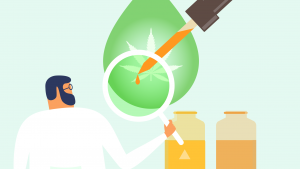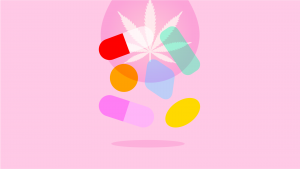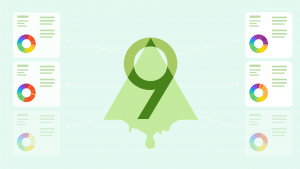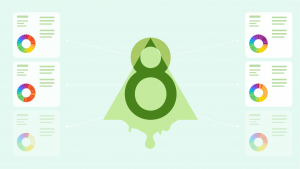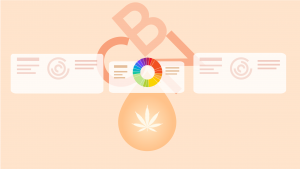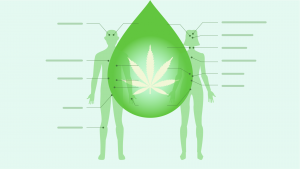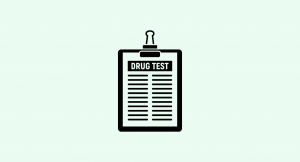Evidence based
Can I Mix Cannabis With Psychedelics? Risks vs. Benefits
Mixing cannabis with psychedelics is common practice — but is it safe?
Some find the combo increases the potency of the experience; others find it helps them relax.
Many people are mixing cannabis with psychedelics like LSD, magic mushrooms, or mescaline — but should they?
What are the risks of combining cannabis products with hallucinogens? What are the benefits?
In this article, we’re going to take a look at the relationship between cannabis and psychedelics.
We’ll explore the reasons why people may choose to combine non-psychoactive hemp or psychoactive marijuana with their psychedelics — and offer some tips for staying safe.
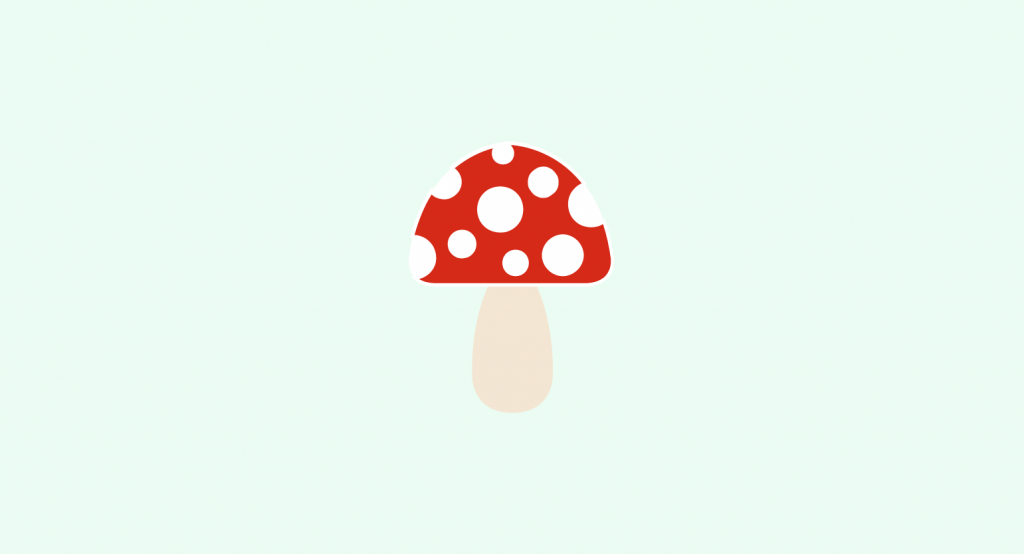
Summary: What You Should Know Before Mixing Cannabis With Psychedelics
- The effects are unpredictable — proceed with caution at your own risk.
- Only people experienced with both substances should consider it — only those who have used and understand both substances individually should even consider mixing them.
- Timing matters — as I’ll point out below, the point in which you take the cannabis in relation to the psychedelics can make a big difference depending on what your goal is for the combination.
- Hemp & marijuana are very different — marijuana tends to make the trip more intense, but hemp has a more relaxing effect.
- Start low & go slow — it’s wise to use cannabis slowly, giving it time to kick in before taking more. You can always add more, but you can’t take it away.

Is Cannabis a Psychedelic?
The word psychedelic means “mind manifesting.” Colloquially, the term refers to substances that produce changes in sensory perception. They may produce full-fledged hallucinations and alternate realities — or they may cause objects in the environment to appear to move and merge together.
Most people who have used both a psychedelic like magic mushrooms or LSD and marijuana will agree cannabis isn’t particularly psychedelic.
It doesn’t produce hallucinations or induces ego-death — something many consider to be the climax of the psychedelic experience.
However, there’s a surprising amount of overlap with cannabinoids and psychedelics in terms of their mechanism of action.
In fact, very high doses of the psychoactive ingredient in marijuana — THC (tetrahydrocannabinol) — can produce visual and auditory distortions similar to LSD or psilocybin (the active ingredient in magic mushrooms).
How Do Psychedelics Work?
There are a surprising number of psychedelic compounds — both natural and synthetic. However, most of them work through more or less the same mechanics.
Most of the classical psychedelics, like LSD, mescaline, DMT, and magic mushrooms, work by activating the 5HT2A serotonin receptors, often referred to as the psychedelic receptor.
These receptors are located throughout the brain but are especially abundant in the cortex [7] — which is the largest and outermost layer of the brain. It’s responsible for all high-level executive functioning, including perception, memory, saliency, imagination, and voluntary physical action.
Activation of this receptor can also produce changes in other cognitive processes, such as the default mode network (DMN). The DMN is an interconnected network of brain regions that drive our underlying thought processes and rumination. It’s thought to be the physical source of our “ego.”
When we take psychedelics, the DMN becomes less active, which is thought to be the cause of what many consider “ego-dissolution”, which can be a life-changing experience.
A Quick Overview of Common Psychedelics
Before we get too much further, let’s briefly go over some of the most popular psychedelics people are combining cannabis with.

1. LSD
LSD stands for lysergic acid diethylamide. It’s one of the most potent psychedelics in the world — producing strong hallucinations at sub-milligram doses.
To put this into context, the psychoactive dose of THC usually starts around 10 mg.
Like most psychedelics, LSD has a very gentle impact on the body — physically, at least. There has never been a reported overdose on this drug.
However, the psychological effects can be huge. Most people who use LSD consider it to be one of the most impactful experiences of their life.
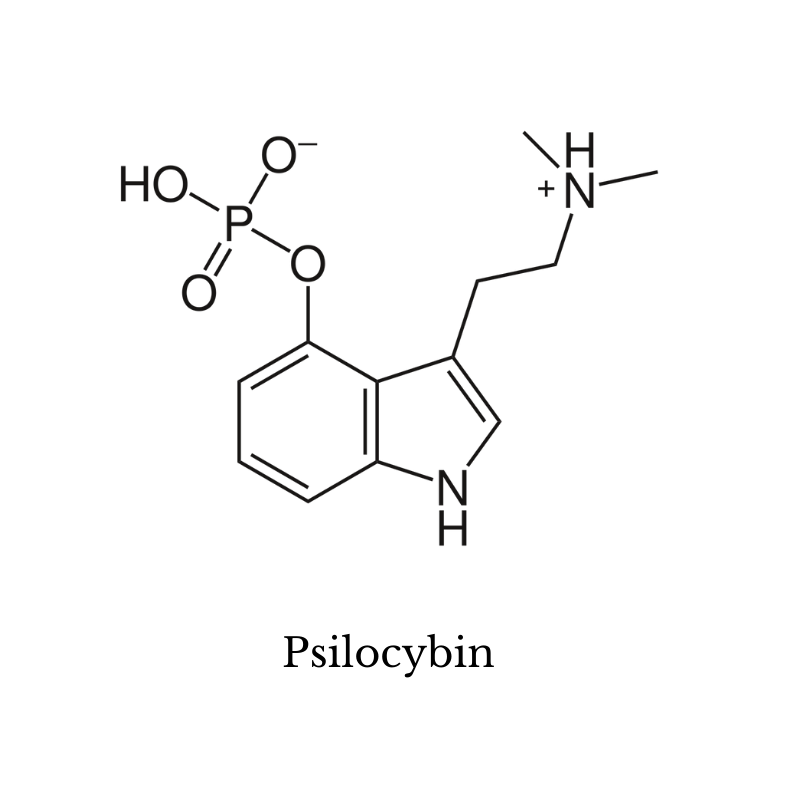
2. Magic Mushrooms
The active ingredients in magic mushrooms are psilocybin and psilocin. There are hundreds of different species of mushrooms that contain these ingredients, but the largest and most common group, by far, is the Psilocybe genus.
Magic mushrooms are usually psychoactive at doses of around 2 grams or more. The effects are very similar to LSD but tend to produce a stronger body load.
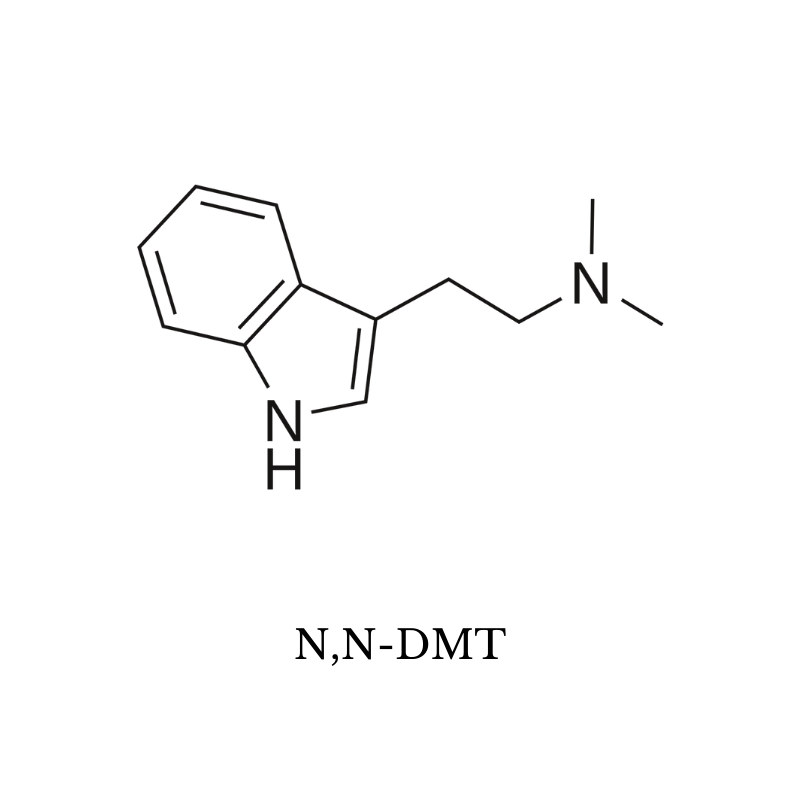
3. DMT
DMT stands for dimethyltryptamine. There are many different kinds of DMT, but the most common are 5-MeO-DMT (found in the Bufo alvarius toad as well as in synthetic form), and N,N-DMT — which is the active ingredient in the psychoactive brew from the Amazon rainforest known as ayahuasca.
The effects of DMT are very short-lived. The entire experience lasts just 20 or 30 minutes when smoked. Ayahuasca is the only exception, which can last several hours.

4. Mescaline
Mescaline is the active ingredient in Peyote or San Pedro cactus. It’s very similar to both LSD and magic mushrooms but with more stimulating action behind it.
Many other synthetic psychedelics have been made using mescaline as a base, such as 2C-B, 2C-C, and DOM.

5. Ketamine
Ketamine is considered a “dirty drug.”
While this sounds bad, it doesn’t mean what you think it means.
A dirty drug is a term that refers to substances that don’t target one specific receptor — rather, they activate many different receptors to produce the combined effects.
One of the many receptors ketamine activates is the CB1 endocannabinoid receptors. This is thought to be the primary mechanisms involved in the painkilling activity of this substance [6].
Cannabinoids may potentiate (make stronger) the painkilling effects of ketamine.
Cannabis & The Psychedelic Receptors
Many of the cannabinoids in hemp and marijuana plants also interact with the psychedelic receptors — though in a different context than psychedelic substances.
Most cannabinoids work by activating or otherwise modulating the endocannabinoid system (ECS) — which is a series of receptors and neurotransmitters tasked with regulating homeostasis (balance).
Interestingly, the ECS is intimately linked with the serotonin system. When compounds interact with one of these systems, they indirectly affect the other one too.
Both the serotonin system and the endocannabinoid system are heavily involved with homeostasis and the regulation of mood, hunger, sleep, cognition, and more.
A study published in 2015 discovered that one of the ECS receptor types (CB1) forms heteromer complexes with the 5HT2A receptors [2]. This means they sometimes merge together into one “super-receptor” that can do things neither receptor can on their own. These heteromer complexes have binding sites that both 5HT2A receptor agonists (like LSD) and CB1 receptor agonists (like THC) can both bind to.
It’s thought that THC’s ability to bind to the CB1 portion activates these combination receptors — causing effects that are similar to the effects of other psychedelics like LSD or magic mushrooms.
Other studies have found these CB1/5HT2A heteromer complexes mediate both the positive painkilling benefits of THC, as well as THC’s amnesiac (memory-loss) effects [3].
Other cannabinoids have been shown to upregulate or enhance serotonin activity at the 5HT2A receptors in the prefrontal cortex [4].
This relationship works both ways. One study found that an increase in 5HT2A activity stimulated the release of endocannabinoids [5].
The relationship between the 5HT2A psychedelic receptors and the endocannabinoid system is considered to be one of the primary mechanisms for the antidepressant effects of psychedelics like LSD or magic mushrooms.
Cannabinoids & Other Serotonin Receptors
There’s more than one type of serotonin receptor. While the 5HT2A type is thought to be the primary agent responsible for the psychedelic effects, there are also several others that can influence things like mood, hunger, aggression, anxiety, and more.
Studies have found that anandamide, one of the body’s primary endocannabinoids, activates the 5HT1A serotonin receptors. CBD has a very similar shape and function as anandamide and will also bind to this serotonin receptor.
Interestingly, CBDA (the non-decarboxylated version) has a stronger binding affinity for the 5HT1A receptors than the decarboxylated form. It’s thought that this effect is the reason why raw, unheated CBD products offer the greatest anti-nausea support.
The activation of the 5-HT1A receptor by CBD has been shown to lead to a decrease in blood pressure, reduced body temperature, lower heart rate, and less pain [1].

Mixing Cannabis & Psychedelics: Benefits, Risks, & Research
It’s common practice for people to mix cannabis products with their psychedelics. Some people claim it helps mellow out the experience and ward off “bad trips” — others swear against it, stating the combination was scary and terrifying.
So which is true? Should cannabis and psychedelics be taken together?
The answer is, unfortunately, “it depends:”
- Sometimes marijuana makes the trip more intense — which can be either scary or enjoyable
- Sometimes marijuana doesn’t cause any change whatsoever
- Sometimes hemp or CBD make the experience more relaxed and enjoyable
- Sometimes hemp or CBD make the effects of psychedelics more intense
The truth is that mixing cannabis with psychedelics, in any context, is completely unpredictable. It totally depends on your personal experience with both substances, the dose you use, and when you take each compound.
Risk vs. Benefits of Mixing Cannabis & Psychedelics
| Metrics | Marijuana (THC) | Hemp (CBD) |
| Psychoactive Effects | Mild to Moderate Psychoactive Effects | No Psychoactivity Whatsoever |
| Low Dose Effects | Calming & Anti-Anxiety | Mildly Stimulating |
| High Dose Effects | Stimulating & Psychoactive | Relaxing & Mildly Sedating |
| Potential Benefits When Used With Psychedelics | Very likely to increase the intensity of the experience May alleviate anxiety & paranoia May prolong the duration of the experience May reduce pushback from the ego during difficult experiences |
May increase the intensity of the experience Likely to alleviate anxiety & paranoia May prolong the duration of the experience Likely to reduce pushback from the ego during difficult experiences |
| Potential Risks When Used With Psychedelics | May increase anxiety and paranoia (especially in higher doses) May lead to experiences that are “too intense,” which can be scary |
May reduce the intensity of the experience May lead to experiences that are “too intense,” which can be scary |
Why Mix Cannabis and Psychedelics?
There are a few reasons someone may choose to combine marijuana or hemp with their psychedelics:
- To reduce anxiety and ego-pushback during a psychedelic experience
- To alleviate nausea
- To “soften the landing” near the end of a psychedelic experience
- To prolong the effects of a psychedelic
- To intensify the trip
We’re going to need to cover each of these in a little more detail because the best way to use cannabis will vary depending on your goal.
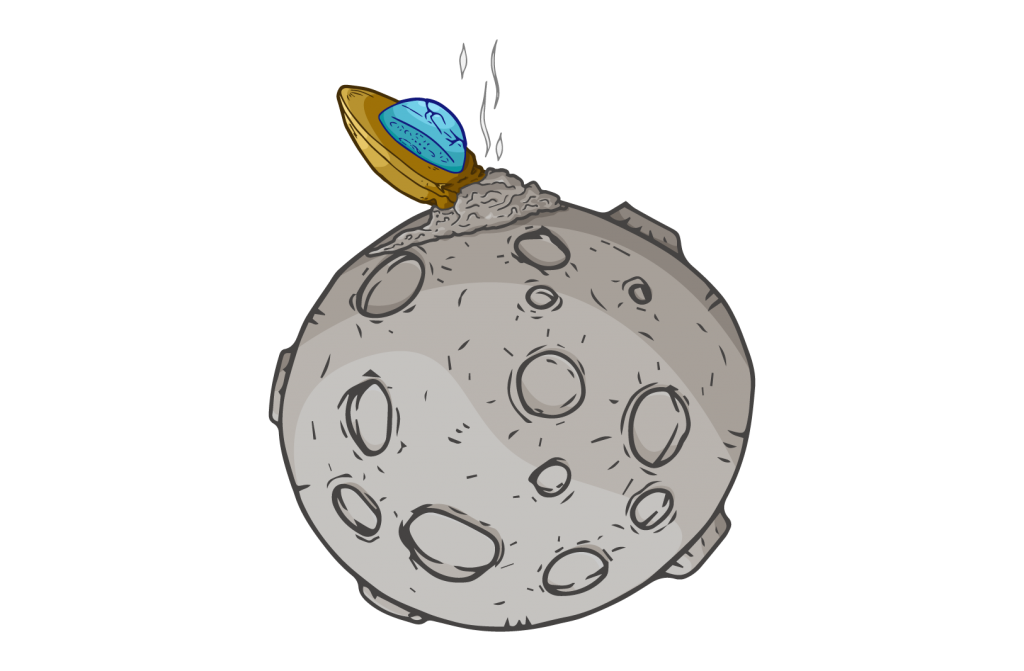
1. Using Marijuana for a Smoother Landing
Most people will use marijuana right after the psychedelics peak to help promote a “smoother landing” during the come-down of psychedelics. As the substances wear off, it can be a rough experience. You may feel antisocial and strongly introspective, anxious, or confused. Marijuana seems to help with these effects — but it can also inject you straight back into a peak experience if taken too early.
If using marijuana to support the come-down, most people find it best to start using smaller amounts, such as a few puffs on a vape pen or joint around the 4 or 5-hour mark on mushrooms and the 5 or 6-hour mark on mescaline or LSD.
One cannabinoid, in particular, delta 8 THC, is being talked about a lot recently for this purpose.
Delta 8 THC is psychoactive, like other THC products, but it has a much lower chance of causing anxiety. It’s often referred to as a “more chilled out” version of THC.

2. Using Hemp or CBD To Offset a “Bad Trip”
Bad trips are the bane of psychedelic explorers. Most people experienced with psychedelics (myself included) prefer to refer to these experiences as “challenging” rather than bad because these scary or uncomfortable experiences usually deliver the most growth and learning. They’re uncomfortable and can be very confronting, but once the experience is over, they’re almost always positive.
Nevertheless, many people want to avoid these challenging experiences — especially if the goal of using psychedelics is for the purpose of engaging in an enjoyable adventure with friends.
One of the main causes of a bad trip is ego pushback. When the ego starts to dissolve, it often resists — leading to panic, paranoia, and a sense of fear and terror. Anecdotally, CBD can help resist the pushback from the ego and allow you to sit back and make the experience more openly — which significantly reduces the severity of a bad trip.
Hemp and CBD are the best options for this, and most people who use these cannabis products in combination with psychedelics find it’s best to take it right at the beginning of the trip when the effects first start to kick in.
Always start with a very low dose and add to it as you see fit. Taking too much may have the opposite effect, so start with a few puffs from a joint of vape pen or a half dose of CBD (compared to what you would normally take). You can always add more later, but once you’ve taken it, you can’t undo it.
Many people find smoking the raw hemp flower to be the best way to use it when combining with psychedelics. There’s something very grounding about smoking (or vaping). It’s a practice that’s been used for centuries alongside psychedelics — usually with tobacco.
If you ever find yourself in a maloka drinking ayahuasca, there are always a few pre-rolled lapacho (ceremonial tobacco) cigarettes nearby to help ground you when you start to feel chaotic or out of control. I’ve found hemp leaf has the same grounding effect, if not even more so than tobacco — which can be a bit too stimulating.
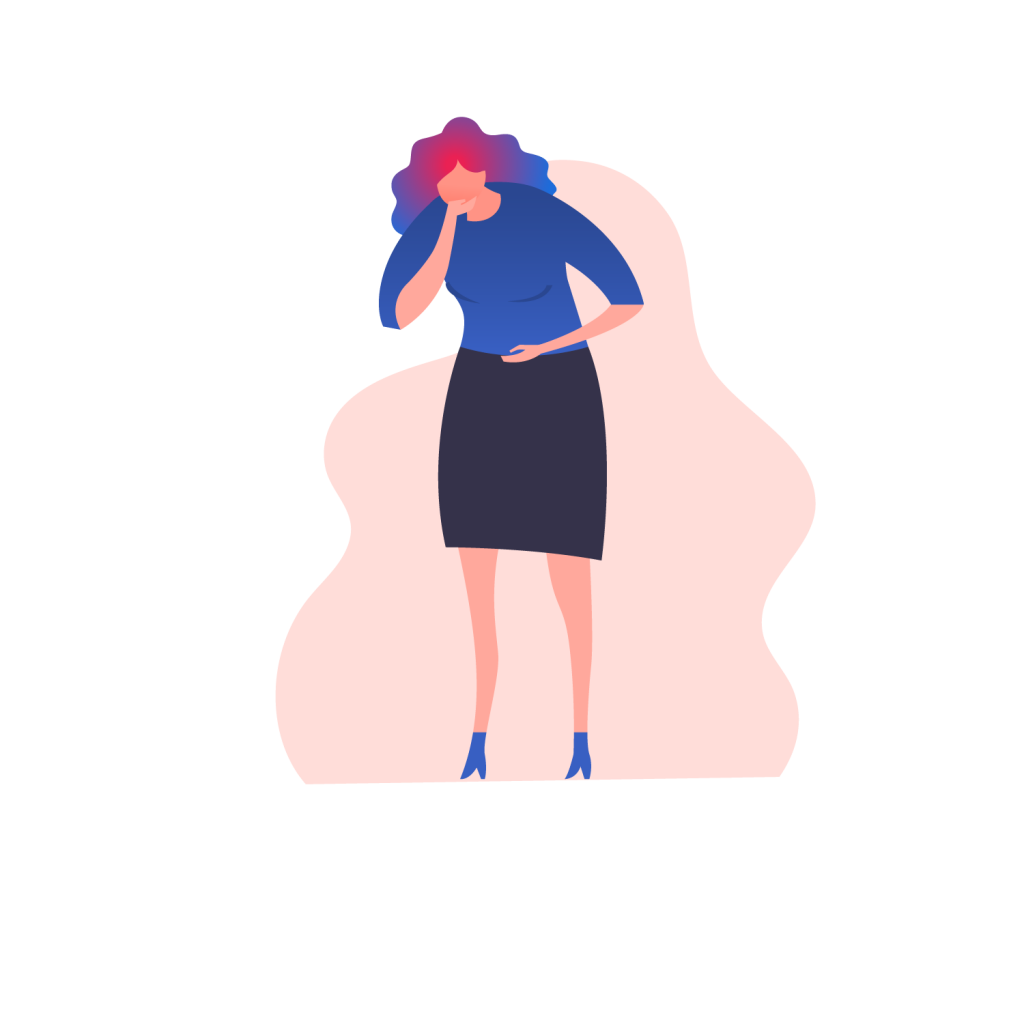
3. Using Cannabis to Alleviate Nausea
Some psychedelics, such as magic mushrooms, peyote, or san Pedro have a tendency to make users feel nauseous. Even mild nausea can feel amplified once the psychoactive effects start to kick in.
There are lots of ways to offset nausea symptoms, like using lemon tek, drinking the mushrooms as a tea, not eating them on an empty stomach, or drinking ginger tea along with the dose.
Many people use cannabis to help alleviate nausea as well — but the dose matters a lot.
In general, you’ll need lower doses of THC (less than 20 mg) and higher doses of CBD or hemp (more than 20 mg) to negate the nauseating effects of some psychedelics.
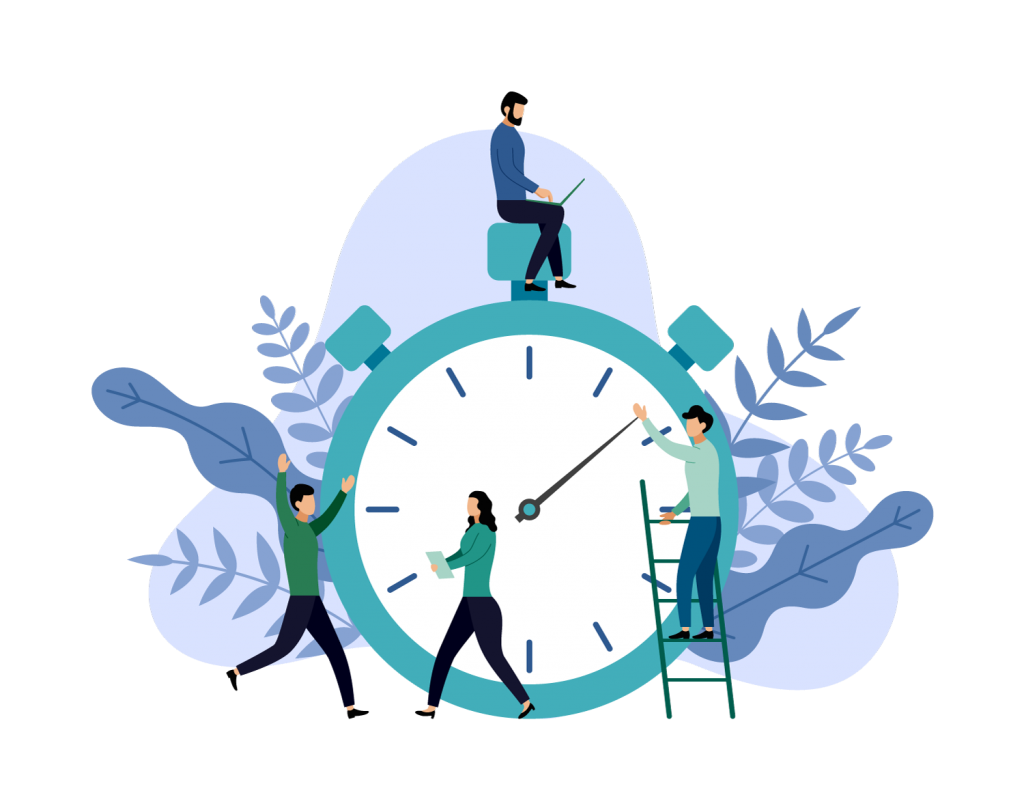
4. Using Cannabis to Prolong the Effects of Psychedelics
Using cannabis to prolong the duration of effects with psychedelics isn’t recommended. You’re walking a fine line between making the experience better and potentially pushing you over the edge into a very uncomfortable situation.
Nevertheless, it’s common practice in the psychonaut community.
To do this, users will combine marijuana with their psychedelics throughout the journey, with a particular emphasis near the end of the trip.
Most psychedelic experiences will go through cycles of increased intensity, followed by periodic breaks of reduced effects. People will usually take marijuana in the form of a vape pen or joint during the “down” times when the effects aren’t as intense.
Many people suggest this practice allows you to squeeze another 1 or even 2 hours of experience out of the psychedelics and can make the high points even more intense.
The downside is that it can also increase feelings of anxiety and paranoia and may lead to a bad trip.
Some users will wait until the trip is nearing the end before taking marijuana. This practice can inject you straight back into a peak experience for a few minutes when they would normally be wearing off.
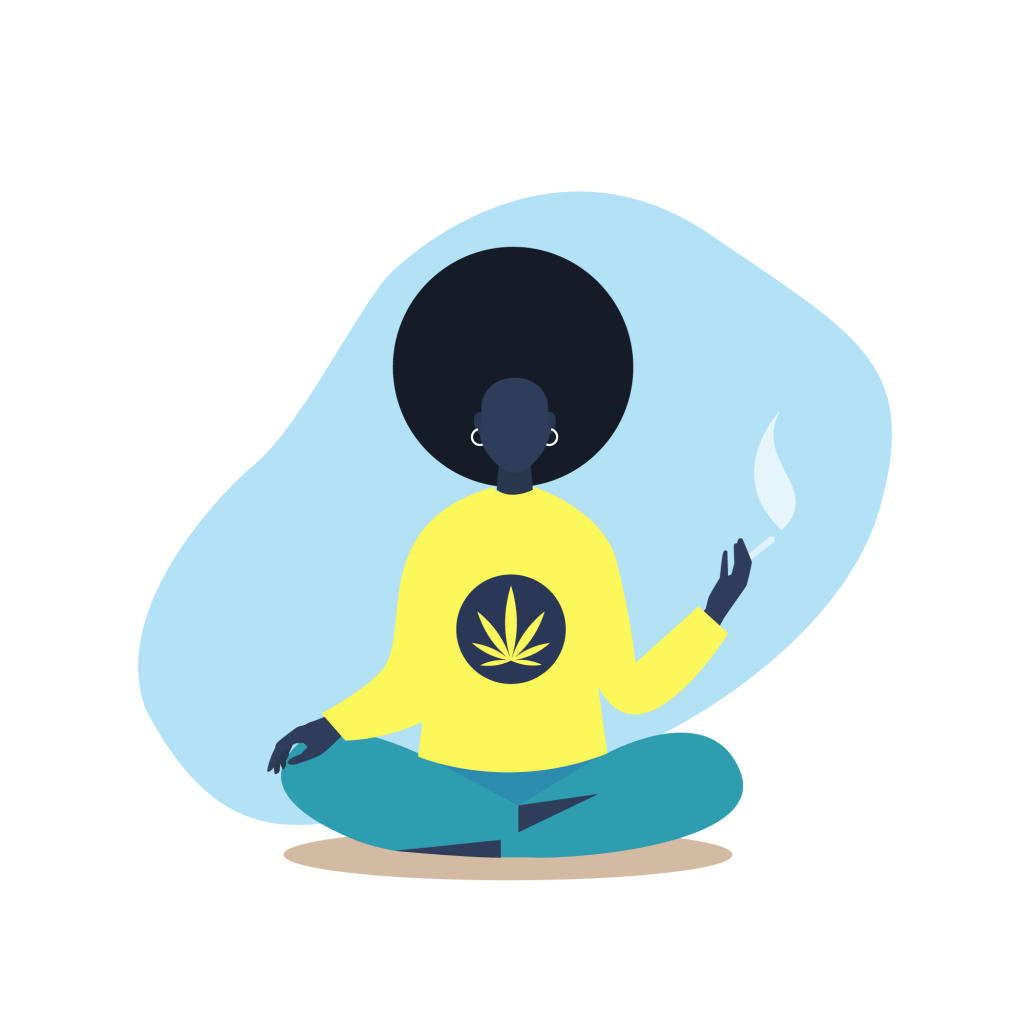
Final Thoughts: Should I Mix Cannabis With Psychedelics?
Mixing cannabis products and psychedelics is common — but it’s not without its inherent risks.
While the combination can be very positive for some — reducing side effects like anxiety, nausea, or paranoia — this isn’t always the case.
The truth is that the effects you’re going to experience when mixing the two are totally unpredictable — everybody is completely different. Factors like your personal experience with these substances, the doses you used, your set and setting, and individual genetic factors can all impact how the combination is going to feel.
With that said, the general idea is to use a small amount of marijuana or hemp consistently throughout the experience to prolong the duration, increase the intensity, and offset some side effects. For those looking to have a smoother landing when the substances wear off, hemp is usually smoked nearing the end of the trip to keep you grounded and mellow out some of the uncomfortable side-effects.
References Cited in This Article
- Fernández‐Ruiz, J., Sagredo, O., Pazos, M. R., García, C., Pertwee, R., Mechoulam, R., & Martínez‐Orgado, J. (2013). Cannabidiol for neurodegenerative disorders: important new clinical applications for this phytocannabinoid?. British journal of clinical pharmacology, 75(2), 323-333.
- Viñals, X., Moreno, E., Lanfumey, L., Cordomí, A., Pastor, A., de La Torre, R., … & Robledo, P. (2015). Cognitive impairment induced by delta9-tetrahydrocannabinol occurs through heteromers between cannabinoid CB 1 and serotonin 5-HT 2A receptors. PLoS Biol, 13(7), e1002194.
- Galindo, L., Moreno, E., López-Armenta, F., Guinart, D., Cuenca-Royo, A., Izquierdo-Serra, M., … & Robledo, P. (2018). Cannabis users show enhanced expression of CB 1-5HT 2A receptor heteromers in olfactory neuroepithelium cells. Molecular neurobiology, 55(8), 6347-6361.
- Franklin, J. M., & Carrasco, G. A. (2013). G-protein receptor kinase 5 regulates the cannabinoid receptor 2-induced up-regulation of serotonin 2A receptors. Journal of Biological Chemistry, 288(22), 15712-15724.
- Parrish, J. C., & Nichols, D. E. (2006). Serotonin 5‐HT2A receptor activation induces 2‐arachidonoylglycerol release through a phospholipase c‐dependent mechanism. Journal of neurochemistry, 99(4), 1164-1175.
- da Fonseca Pacheco, D., Romero, T. R. L., & Duarte, I. D. G. (2019). Ketamine induces central antinociception mediated by endogenous cannabinoids and activation of CB1 receptors. Neuroscience letters, 699, 140-144.
- Ishii, T., Kimura, Y., Ichise, M., Takahata, K., Kitamura, S., Moriguchi, S., … & Suhara, T. (2017). Anatomical relationships between serotonin 5-HT2A and dopamine D2 receptors in living human brain. Plos one, 12(12), e0189318.



